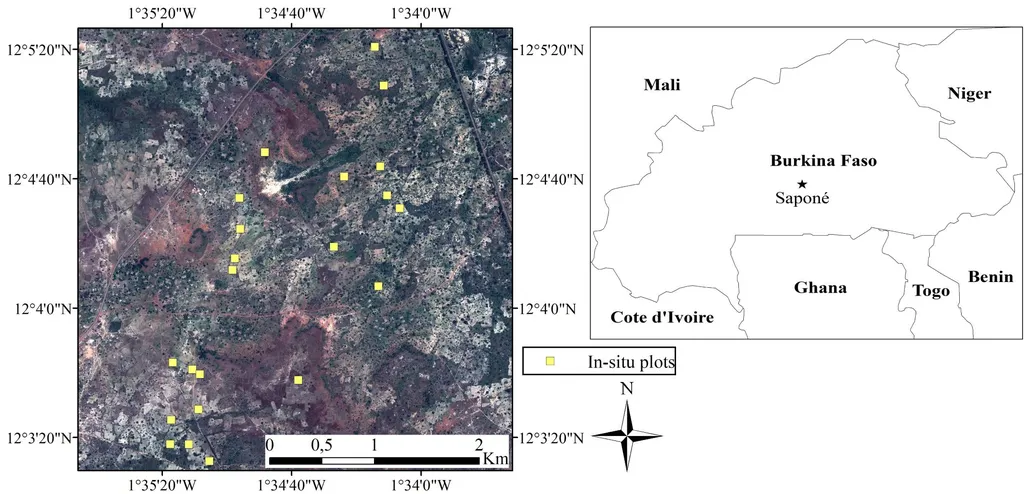In the ever-evolving landscape of precision agriculture, the quest for accurate crop yield prediction has taken a significant leap forward. A recent study published in the *IEEE Journal of Selected Topics in Applied Earth Observations and Remote Sensing* has pitted two of the most powerful tools in satellite-based agriculture against each other: the venerable Moderate Resolution Imaging Spectrometer (MODIS) and the newer Sentinel-2 constellation. The findings could reshape how farmers and agribusinesses approach yield prediction, offering a glimpse into a future where finer spatial resolution and advanced spectral bands could drive more precise and profitable agricultural practices.
For years, MODIS has been the go-to for large-scale crop yield mapping, thanks to its high temporal resolution and consistent atmospheric correction. However, as MODIS nears the end of its operational life, the agricultural community has been eyeing Sentinel-2 as a potential successor. With its finer spatial resolution and vegetation-sensitive spectral bands, Sentinel-2 promises to deliver more detailed insights into crop health and yield potential. But can it truly match or even surpass the performance of MODIS?
Kennedy Adriko, lead author of the study and a researcher at Forschungszentrum Jülich in Germany, and his team set out to answer this question. They conducted a regional sensor-to-sensor comparison of MODIS and Sentinel-2, focusing on crop yield prediction across two agro-ecological zones. Using reproducible regression workflows, they analyzed matched spatiotemporal data to determine which sensor provided more accurate yield estimates.
The results were compelling. Sentinel-2 consistently outperformed MODIS in predictive accuracy. For cotton, Sentinel-2 achieved an RMSE of 123.52 lb/acre and an R value of 0.76, compared to MODIS’s 129.20 lb/acre and R value of 0.74. For corn, the disparity was even more pronounced, with Sentinel-2 delivering an RMSE of 8.40 Bu/acre and an R value of 0.79, outperforming MODIS’s 8.69 and 0.66, respectively.
Adriko emphasized the significance of these findings, stating, “Sentinel-2 captures finer spatial variation in crop phenology, which is crucial for regional- and field-scale yield prediction. This level of detail can empower farmers to make more informed decisions, ultimately enhancing productivity and profitability.”
The study also identified key predictors across both sensors, including the Enhanced Vegetation Index (EVI), Fraction of Photosynthetically Active Radiation, and Leaf Area Index. Despite Sentinel-2’s lower temporal frequency compared to MODIS, it delivered robust, regionally consistent estimates, underscoring its suitability as a successor for operational crop monitoring.
The commercial implications of this research are substantial. As the agriculture sector increasingly adopts precision farming techniques, the ability to accurately predict crop yields at a finer spatial scale can lead to more efficient resource management, reduced costs, and higher profits. Farmers can optimize irrigation, fertilization, and pest control strategies based on detailed, real-time data, ensuring that every acre of their land reaches its full potential.
Moreover, the transition from MODIS to Sentinel-2 could open new avenues for agribusinesses and technology providers. Companies specializing in remote sensing and data analytics can develop advanced tools and platforms tailored to Sentinel-2’s capabilities, offering farmers and agricultural cooperatives cutting-edge solutions for yield prediction and crop management.
As the agricultural community continues to embrace technological advancements, the findings of this study serve as a beacon of progress. The shift from MODIS to Sentinel-2 represents not just a change in tools but a paradigm shift in how we approach crop monitoring and yield prediction. With its finer spatial resolution and advanced spectral bands, Sentinel-2 is poised to become the cornerstone of modern precision agriculture, driving innovation and shaping the future of the sector.
In the words of Adriko, “This research underscores the importance of leveraging advanced remote sensing technologies to enhance agricultural practices. As we move forward, the integration of Sentinel-2 into operational crop monitoring systems will be pivotal in achieving sustainable and profitable agriculture.”
As the agriculture sector stands on the brink of a new era, the insights gleaned from this study will undoubtedly play a crucial role in shaping the future of crop yield prediction and precision farming. The journey from MODIS to Sentinel-2 is not just a technological transition but a step towards a more efficient, sustainable, and profitable agricultural landscape.

